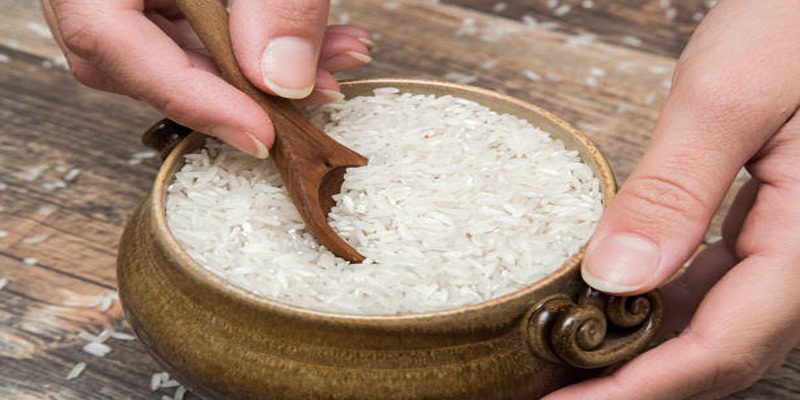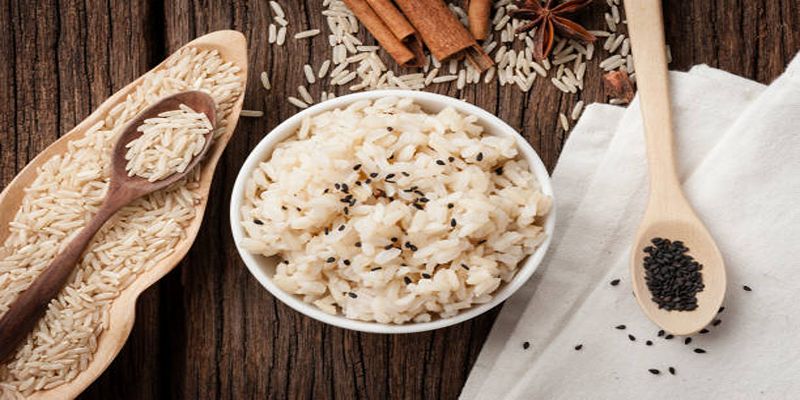Why Cooking Rice Matters for Your Health
Jul 09, 2024 By Madison Evans
Cooking rice properly is not just a culinary skill but an essential practice for maintaining good health. Rice, being a staple food for billions around the world, is a primary source of carbohydrates and provides essential nutrients such as vitamins, minerals, and fiber. Properly cooked rice ensures maximum nutrient retention and minimizes the risk of contamination from naturally occurring arsenic. Additionally, the right cooking techniques can prevent the development of harmful bacteria, making rice safe for consumption. By understanding the significance of cooking rice correctly, one can enjoy its nutritional benefits while ensuring it contributes positively to overall well-being and health. In this guide, we will delve into the best methods and tips for cooking rice to perfection.
Selecting the Right Type of Rice:

- The most common types of rice include long-grain, medium-grain, and short-grain. Each variety has a different texture, flavor, and cooking time.
- Long-grain rice is typically drier and fluffier when cooked, making it perfect for dishes that require separate grains like pilafs and salads.
- Medium-grain rice is more moist and tender than long-grain varieties, making it ideal for dishes like risottos and paellas.
- Short-grain rice is sticky and plump when cooked, making it suitable for sushi or desserts.
Washing and Soaking Techniques:
Washing and soaking rice are crucial steps that should not be overlooked. Washing rice removes any surface starch that can cause the grains to become too sticky or clump together during cooking. To wash rice, place it in a bowl and fill with cold water, gently swirling the rice with your hand. Repeat this process until the water runs clear.
Soaking rice, on the other hand, can reduce cooking time and improve the texture by allowing the grains to absorb water evenly. For most types of rice, a 30-minute soak is sufficient. Rinsing rice under cold water is especially essential for varieties like basmati and jasmine, which benefit from a lighter, fluffier texture after cooking. Properly washed and soaked rice ensures a superior culinary outcome.
Cooking Methods for Perfect Rice:
- Stovetop Method: This is the most traditional method of cooking rice and involves boiling the rice in a pot on the stovetop. For best results, use a heavy-bottomed pan with a tight-fitting lid to trap steam during cooking.
- Rice Cooker Method: Using an electric rice cooker is another popular method for cooking rice, as it allows for hands-free cooking and consistent results every time.
- Pressure Cooker Method: Cooking rice in a pressure cooker can significantly reduce cooking time while retaining nutrients and flavor.
- Microwave Method: In a pinch, using the microwave to cook rice is a quick and convenient option. However, the texture may not be as fluffy compared to other methods.
Tips for Fluffy and Flavorful Rice:
- Use the right ratio of water to rice, typically 2:1. For example, if you are cooking one cup of rice, use two cups of water.
- Let the rice rest off heat for at least 10 minutes after cooking to allow it to continue steaming and fluffing up.
- Avoid lifting the lid too often while cooking to prevent steam from escaping and interrupting the cooking process.
- Add flavor by using broth or stock instead of water, or by incorporating spices and herbs into the cooking process.
- For a healthier option, try substituting white rice with brown rice, which is higher in fiber and nutrients.
Addressing Common Cooking Mistakes:
- Overcooking rice can result in mushy and sticky grains. It is essential to follow the recommended cooking times for different types of rice and adjust accordingly.
- Not using enough water or not letting the rice rest after cooking can result in undercooked and crunchy rice.
- Adding too much oil during cooking can make the rice greasy and reduce its nutritional value.
- Using a dirty pot or utensils while cooking can contaminate the rice with harmful bacteria, leading to foodborne illnesses.
- Storing cooked rice in the fridge for extended periods can promote bacterial growth and should be consumed within a day or two.
Nutrient Preservation Strategies:
To maximize the nutritional value of your rice, consider employing various nutrient preservation strategies during the cooking process. One effective approach is to rinse the rice thoroughly to remove surface contaminants while using the absorbed water for cooking to retain the water-soluble nutrients. Opt for steaming or boiling over frying, as these methods help maintain the rice's nutritional integrity.
Incorporating ingredients like vegetables, lean proteins, and healthy fats can increase the overall nutrient content of your meal. Another tip is to avoid excessive stirring during cooking, which can break down the rice and cause nutrient loss. Finally, consuming freshly cooked rice instead of reheating helps maintain its nutrient profile. By adopting these strategies, you can ensure that your rice is not only delicious but also packed with essential nutrients for a balanced diet.
Storing Cooked Rice Safely:

- Cooked rice should be stored in an airtight container and refrigerated within 2 hours of cooking.
- To prevent bacterial growth, it is best to consume cooked rice within one to two days.
- Reheat cooked rice thoroughly before consuming, making sure it reaches an internal temperature of at least 165F (74C).
- Avoid leaving cooked rice at room temperature for extended periods, as bacteria can grow rapidly in this environment.
- If you have leftover rice that cannot be consumed within a day or two, consider freezing it for later use. Just make sure to thaw and reheat it thoroughly before consuming.
Flavoring and Enhancing Cooked Rice:
There are many ways to enhance the flavor of cooked rice, transforming it from a simple side dish into a culinary delight. Adding aromatic spices like saffron, turmeric, or cardamom can impart a rich and exotic taste. Mixing in fresh herbs such as cilantro, parsley, or basil adds a burst of freshness. Incorporating vegetables like peas, carrots, or bell peppers can introduce texture and color. For a savory depth, consider using ingredients like garlic, onions, or shallots sauted in olive oil or butter. Another option is to cook the rice in broth instead of water to infuse it with additional flavor. Including a splash of soy sauce or citrus juice can also elevate the final dish, making it a memorable part of your meal.
Conclusion:
Rice is a versatile and essential staple food consumed worldwide, and knowing how to cook it correctly can enhance its taste and nutritional value. Whether you prefer the stovetop method or opt for an electric rice cooker, following these tips and techniques will help you achieve perfect rice every time. Experiment with different cooking methods and flavor combinations to discover your favorite way of enjoying this beloved grain. With proper preparation, storage, and nutrient preservation strategies, rice can be a nutritious addition to any meal. So go ahead, grab your pot and spatula, and start cooking some delicious rice today!







